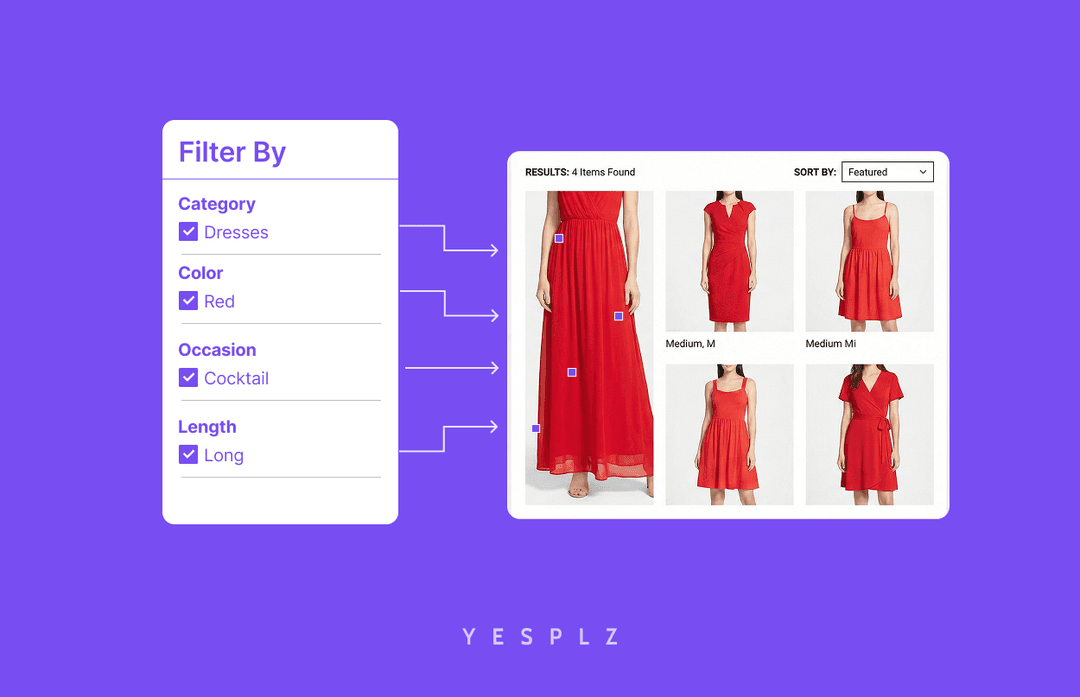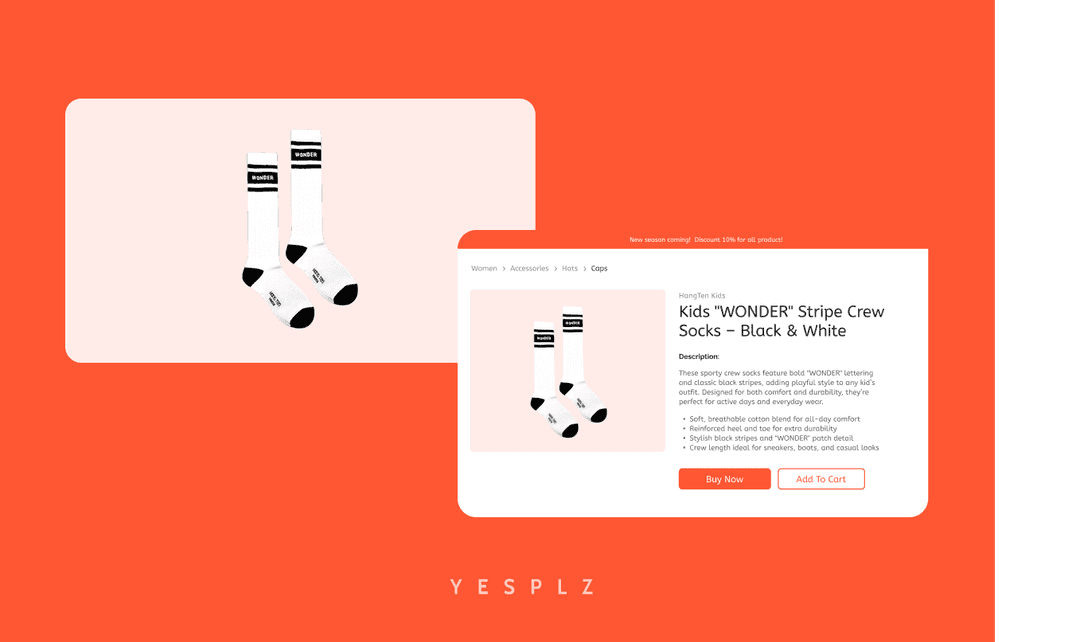Practical tips on preparing your online store for ChatGPT Shopping
by Jiwon Hong, Founder at YesPlz AIMay 2025

Just a few days ago, OpenAI announced that it’s bringing shopping to ChatGPT. As someone working at the intersection of AI and fashion eCommerce, I wanted to break down what this means for online fashion retailers-and how we can get ahead of the change.
In this blog, I'll briefly cover:
Until now, if I wanted a “sleeveless yellow floral dress for spring,” I’d Google it and scroll through endless options. The problem isn’t a lack of recommendations-it’s having too many and needing to sift through them all to find the right one.

ChatGPT changes this by understanding your search intent on a deeper level, thanks to its ability to remember the context and history of your conversations (“memory”).
With ChatGPT shopping, instead of hundreds of generic yellow floral dresses, you’ll get a curated shortlist tailored to your preferences-things like price range, brand aesthetic, brand reputation (no more post-purchase regret from poor quality!), and even fit and fabric quality based on user reviews. All those steps I used to take to research a product? ChatGPT can now do them for me in seconds.
But first, how does ChatGPT recommend products? And more importantly, what does that mean for fashion retailers?
ChatGPT’s recommendations are based on three main ingredients:
Meta descriptions
Third-party reviews
Matching to a shopper’s intent
This means online fashion retailers need to design their websites so ChatGPT can recognize and recommend your products. That starts with:
Quality reviews from users and third parties
High-quality product metadata
But honestly, not every product will get great reviews. Getting user reviews is tough, and reviews from media or influencers don’t come cheap. We don’t have much control here, but what we can control is creating high-quality product details. So let’s talk about the metadata we can create.
High-quality metadata means product details that are specific and descriptive, tailored to your shoppers’ needs.
Don’t settle for a product description like “yellow maxi dress.” Instead, gather as much detailed information as possible, such as:
Category: Cami long dress
Neckline: ruffle collar, v-neck
Sleeve Length: Sleeveless
Length: Long
Pattern: Floral
Color: Pale Yellow
Details: Ruffle, front-tie
Since we’re in fashion, let’s not forget about styling tips-shoppers are always thinking about how to style an item. For example:
Vibe: Romantic
Occasion: Brunch, Daily, Vacation
Seasonality: Spring, Summer
Jewelry Suggestions: Orange beaded necklace
Shoes Suggestions: Yellow ballet shoes for the perfect spring look
Now, imagine a shopper prompts ChatGPT with:
“A perfect spring dress for going out to brunch at a resort. I want something romantic, long, floral, yellow.”
With all this information in your metadata, ChatGPT can recommend your product over others with only a basic description like “yellow floral dress.”
The more specific and tailored your product information, the better your chances of attracting the right shoppers. You can refer to our study on shopper prompt types "Top Questions Shoppers Ask AI Stylist" to see how important detailed product data is for discovery in personalized searches.
With AI, creating meta titles and descriptions is easier than ever. Here’s how:
Step 1. Upload your product image to your favorite LLM.
Step 2. Ask it to create product titles and descriptions.


Step 3. Copy and update your product meta fields if you’re a Shopify merchant, or into your database if you run your own customized platform.

The results are detailed, descriptive, and highly relevant to your shoppers-making your products more likely to be discovered and recommended by ChatGPT to your target customers. (You can also refer to a step-by-step guide here: “How to Create Product Descriptions with Automatic Product Tagging and ChatGPT”)
Alternatively, you can use a catalog management solution to automate the entire process, as shown in the image below. Whenever a new product is uploaded, an AI-powered catalog manager will identify a category, enrich the product details, and update all the product information fields automatically.
 You can also ask the AI to generate key taxonomy and copy that data into your meta fields or product database. This can improve search, filtering, and recommendations.
You can also ask the AI to generate key taxonomy and copy that data into your meta fields or product database. This can improve search, filtering, and recommendations.
Simply put, everyone will start doing this to get discovered-whether it’s on Google, ChatGPT, or any other AI platform your shoppers use. Products without this level of detail will most likely have reduced chances of being recommended.
Start creating unique, highly targeted, rich metadata for your shoppers.
Use AI-either your favorite LLM or a fully automated solution-to build a pipeline for continuously generating high-quality, shopper-tailored metadata.
Spend more time talking to your customers, learning what they want, and refining products and content accordingly. That’s something AI can’t replace-at least not yet.
Recently, I’ve been getting inbound inquiries for YesPlz because ChatGPT recommended us. The way people search is changing fast, and we don’t want to miss this perfect moment to level up as we transition into the ChatGPT shopping era.
And in case I haven’t mentioned it yet, our fashion-savvy AI can help you get there.
Let's chat! You can schedule a demo using the link below.

Written by Jiwon Hong
Founder at YesPlz AI
Building discovery engines is my favorite topic and I can talk about it all day long!

Stop losing sales to poor product filtering. Discover how AI simplifies creating Shopify filters, saving you 25-50 hours per 100 products.
by YesPlz.AI

Automate Shopify product pages and cut 50–100 hours of manual work. AI generates product titles, descriptions, and metadata instantly from product images.
by YesPlz.AI